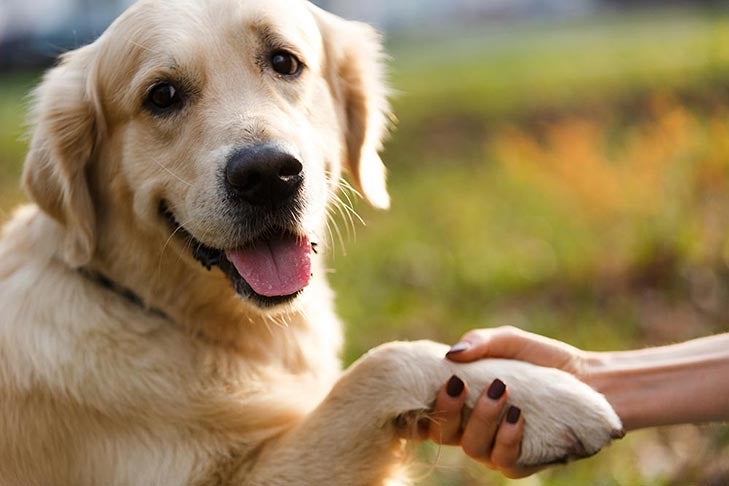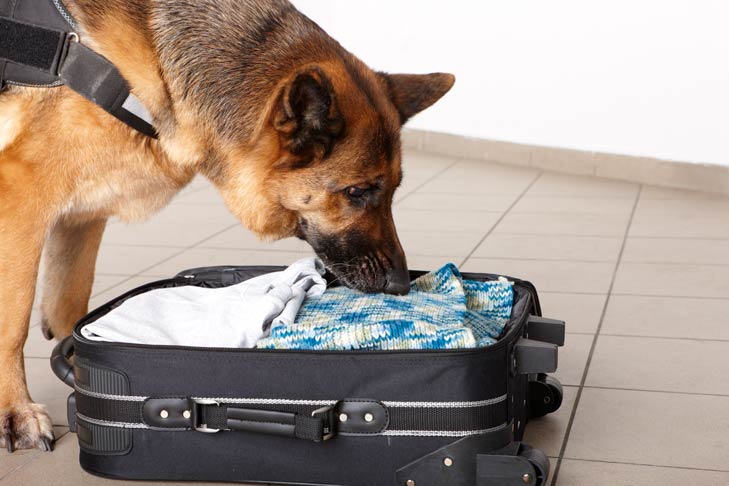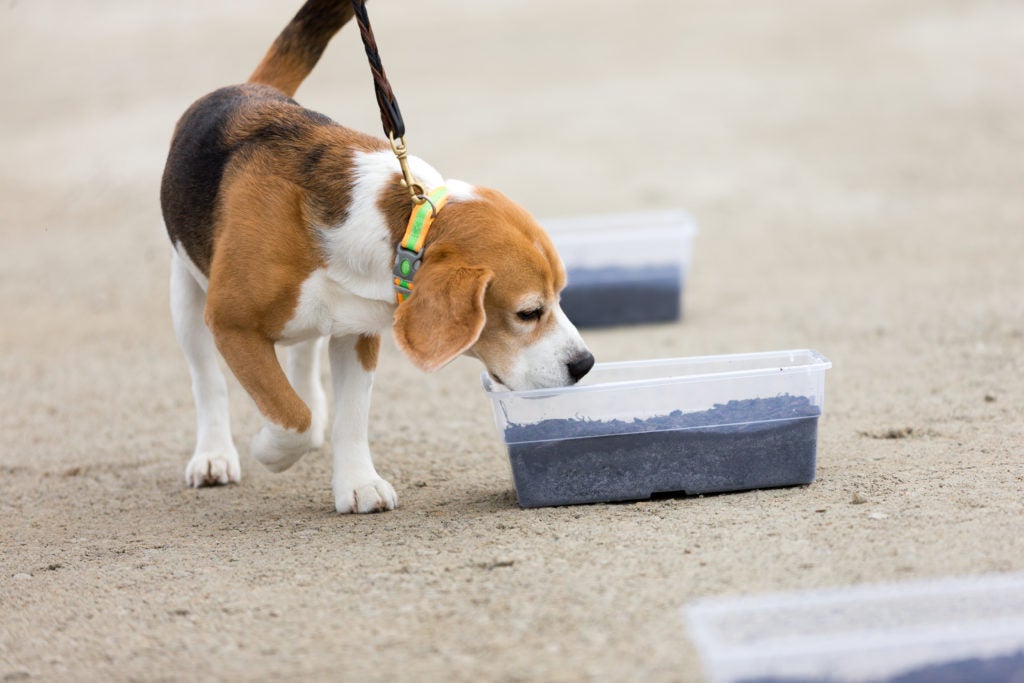How much do you know about what goes on in your pup’s head? Do you believe it’s all pretty simple in there? Just thoughts about dinner, the cat next door, and more dinner? Think again.
Dogs have been known to learn hundred of words, do arithmetic, and guess what people and other dogs are thinking. We know all this and more, thanks to the growing number of scientists around the country and the world who have, since the beginning of this century, been turning their attention to the burgeoning field of dog cognition.
So what do you need to know about your dog’s know-how? And how can you nurture that brilliant brain of his?
All Dogs Are Different
The first thing to note is: there’s no such thing as “the dog.” Just like humans, each dog is different. So while scientists are working hard on collecting data about the way dogs experience the world, it’s important to remember that their findings aren’t designed to give you a blueprint to your particular pet. The studies can be interesting, useful guides, but the real joy of dog cognition is in getting curious about the way your own dog thinks.
While you get to know your dog’s mind, remember that there are many different kinds of intelligence. Some dogs might excel at gauging social situations, others might be adept at learning words, while still others might have great problem-solving abilities — or your dog might have some other cognitive skill entirely.
Dogs: Super-Savvy, Socially
Although every dog is unique, there is enough evidence to indicate that species-wide one of the really special things about dogs is how well they understand humans. “They are very attentive to and responsive to us, which is a great social cognitive skill,” Dr. Alexandra Horowitz, head of the Dog Cognition Lab at Barnard College, Columbia University, told me.
Researchers don’t entirely agree on why dogs are so socially savvy. The prevailing view is that their social intelligence is evolutionary: that over the thousands of years since wolves entered the human sphere and started to morph into the pets we know today, breeding has favored qualities that make dogs good companions to humans, such as friendliness and an affinity for us, which make them good at reading our behavior.
There’s also a theory that each dog simply acquires his or her social intelligence through the sheer amount of time spent around humans – that’s why puppy socialization is so important.

The answer might be a combination of these two factors – of evolution and socialization. Either way, the result is a species with a remarkable fondness for and understanding of humans.
This manifests in many ways. Zachary Silver, a Ph.D. student in the Comparative Cognition Lab at Yale University, studies the way dogs interpret the social world. “They’re extremely skillful at following our communicative cues, especially our points and our gazes,” he told me. “But it even goes a step further: they pay really close attention to how we interact with each other.” For instance, there’s evidence to suggest that, in some contexts, dogs will notice whether a human is helpful or unhelpful, and favor the helpful person.
Silver’s current research focuses on dogs’ understanding of humans’ perspectives: he’s working to build on previous findings indicating that, in some contexts, if food is hidden such that a dog sees one person observe the hiding and one miss it, they are more likely to take a hint about its whereabouts from the person who watched it being hidden. This suggests that dogs might be drawing all sorts of complex conclusions about what we know and feel.
As Silver observes, “Dogs do pretty sophisticated things regarding understanding our own perspective.”
The Dog’s Nose Knows
If humans want to understand what it’s like to be a dog, the nose is an excellent place to start. It’s well known that dogs have a much more powerful sense of smell than humans, but did you know just how much more powerful? As Alexandra Horowitz outlines in her New York Times bestselling book “Being a Dog: Following the Dog Into a World of Smell”:
Explosives-detection dogs smell as little as a picogram—a trillionth of a gram— of TNT or other explosive. What might it be like to notice a picogram of an odor? … The average cinnamon roll has about a gram of cinnamon in it. Sure, the human nose is on it, from the moment we open the door of the house. Now imagine the smell of one trillion cinnamon rolls. That’s what the dog coming in with us smells when we enter.

This sense of smell gives dogs remarkable insights into their environment. Horowitz notes that a tracking dog can tell which direction someone is moving in from smelling just five of their footprints. And in some European countries, dogs’ noses now have the legal seal of approval: if a dog is able to identify a suspect based on smells left at the crime scene, that evidence is admissible in court.
This sensory difference is important because it gives us information about how dogs experience and interpret the world. Humans are primarily visual creatures, navigating by sight. Dogs, by contrast, process the world through their noses, and thus have all kinds of scent skills that are difficult for humans to conceive of.
By applying a little imagination about what it might be like to live in a scent-based world, we can better appreciate dogs’ cognitive abilities. For instance: dogs do not recognize themselves in mirrors, which had been thought to indicate that they don’t possess self-awareness. But Dr. Horowitz has demonstrated that dogs do recognize changes in their own smell, demonstrating “perhaps something somewhat like self-awareness,” she told me.
How to Nurture Your Dog’s Cognitive Abilities
Since dogs’ experiences are so scent-based, one of the best ways to nurture your dog is to indulge his or her nose. “My favorite mantra these days is ‘let them sniff,'” Dr. Horowitz told me. “It’s important to let them investigate the world with their noses.” Dr. Horowitz and fellow canine behavior researcher Dr. Charlotte Duranton have even found that dogs who are allowed to sniff have a more optimistic approach to the world.
Besides allowing them plenty of freedom to sniff, how else can dog owners keep their pets mentally stimulated? Experts consulted by the American Kennel Club agreed: it’s all about communication. “Your dogs are constantly communicating with you — watch their behavior carefully, instead of presuming that you know what they want or know,” Dr. Horowitz told me. “And they learn what we want or know best from our being consistent and clear when we ask things of them. Give them new challenges and expose them to new places and activities.”

Channeling Dog Sports
Dog sports are a great way to foster good canine-human communication while exposing dogs to plenty of new situations and challenges. Dr. Mary Burch, the director of the AKC Canine Good Citizen Program and a certified applied animal behaviorist, told me: “The best advice I could give dog owners who want to keep their dogs mentally active and enhance their cognitive abilities is to get involved with some kind of training activity with your dog. Agility, Rally, Obedience, Trick Dog, Therapy Dog work, Scent Work, and AKC FIT DOG are just a sample. Trick training is something you can do at home and most dogs love it.”
Your dog’s breed can be a helpful guide to choosing the best sport for him, since breeds were created for specific purposes. For example, Dr. Burch notes, since the Border Collie is a herding dog, herding stimulates them physically and intellectually, whereas terriers, which were bred to hunt underground, often enjoy Earthdog.
Most importantly, approach your dog with curiosity and a healthy dose of imagination. You’ll be surprised about how much you learn.

